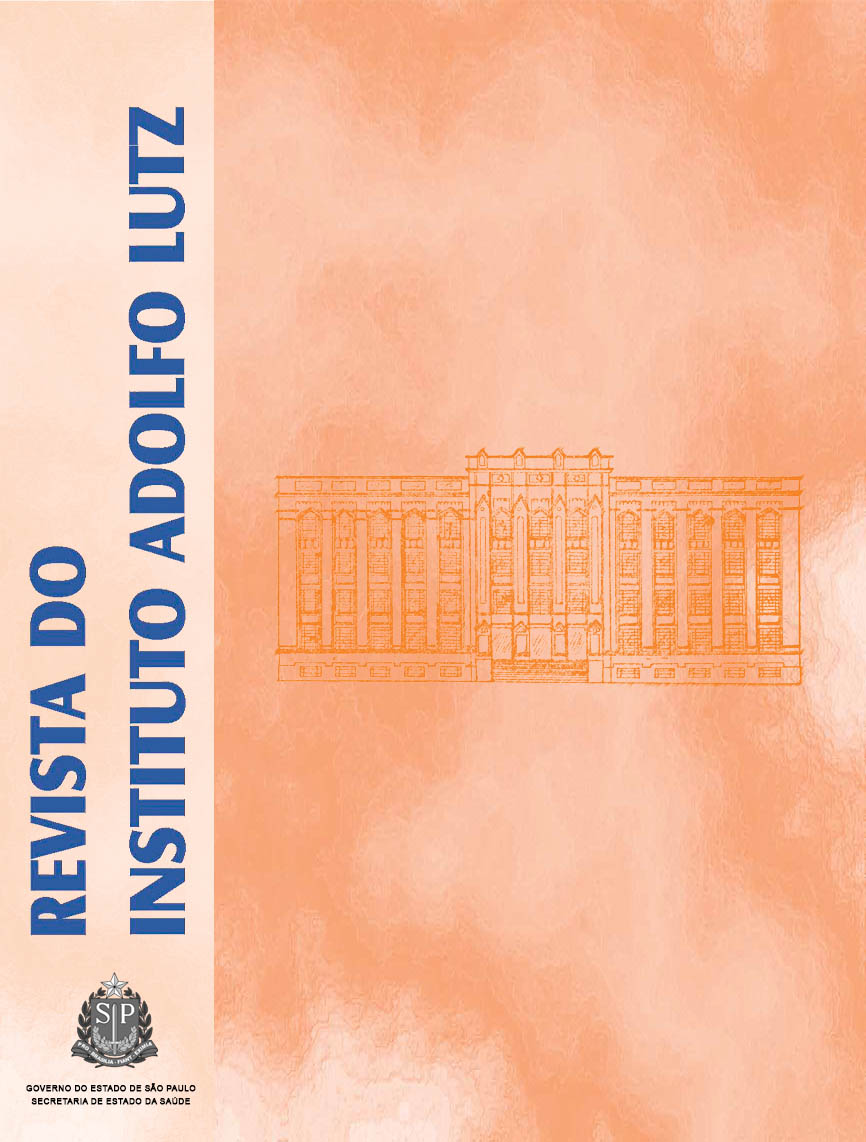Abstract
The inadequate foods handling and the exposition of them to environment increase the hazard of contamination of the doce de leite offered to consumers. The aim of the present study was to evaluate the microbiology quality of pasty doce de leite sliced into pieces to be sold by retail. Salmonella detection, and coagulase-positive Staphylococci, thermotolerant coliforms, mould and yeast counting were performed in 28 samples of doce de leite. Salmonella enterica subsp. enterica serotype Typhimurium was detected in 25g of one sample. This strain was resistant to cloramphenicol and sulphametoxazole-trimethoprim, and partially resistant to tetracycline, but susceptible to the other antimicrobial agents. All of the samples showed coagulase-positive Staphylococci counting < 10 CFU/g. Results from thermotolerant coliforms counting were < 3 MPN/g, except two samples collected from two supermarkets which showed 0.4 and 2.1 MPN/g, respectively. One unique sample showed mould and yeast counting with values accepted by Brazilian legislation; the other samples showed counts over 1.0 x 102 CFU/g. As the pasty doce de leite have been sliced into pieces in the markets this procedure should be the source of pathogenic microorganisms to humans, which justify the establishment of an stringent control on the inspection and the surveillance of this kind of food.References
1. Brasil. Portaria nº354, de 04/09/97, do Ministério da Agricultura e do Abastecimento. Regulamento técnico para fixação de identidade e qualidade de doce de leite. Diário Oficial da União, Brasília, 08 set. 1997. Seção I, p. 19685.
2. Pavlovic S, Santos RC, Silva ME, Gloria MBA. Effectof processing on the nutritive value of Doce de Leite, atypical Latin-American confectionary product. Arq BiolTecnol. 1992; 35 (4): 691-8.
3. FDA. Bacteriological analytical manual, 7th ed. Association of Official Analytical Chemists International, Arlington, VA. 1992.
4. D‘Aoust J, Maurer J, Baley JS. Salmonella Species. In:DOYLE, G.L.; ABRAHAM, A.G.; ANTONI, G.L. Food Microbiology: Fundamentals and Frontiers. 2nd ed. Washington: ASM; 2001. p. 141-78.
5. Brasil. Resolução RDC no 12, de 02/01/2001, da Agência Nacional de Vigilância Sanitária. Regulamento técnico sobre padrões Microbiológicos para Alimentos. Diário Oficial da União, Brasíli, 10 jan. 2001. Seção I, p. 45-53.
6. Gorman R, Adley CC. Characterization of Salmonella enterica serotype Typhimurium isolates from humans, foods, and animal sources in the Republic of Ireland. JClin Microbiol. 2004; 42 (5): 2314-6.
7. Cui S, Ge B, Zheng J, Meng J. Prevalence and antimicrobial resistance of Campylobacter spp. and Salmonella serovars in organic chickens from Maryland retail stores. Appl Environm Microbiol. 2005; 71 (7): 4108-11.
8. Miko A, Pries K, Schroeter A, Helmuth R. Molecular mechanisms of resistance in multidrug-resistant serovars of Salmonella enterica isolated from foods in Germany. J Antimicrob Chemother. 2005; 56: 1025-33.
9. Antunes P, Machado J, Peixe L. Characterization of antimicrobial resistance and class 1 and 2 integrons in Salmonella enterica isolates from different sources in Portugal. J Antimicrob Chemother. 2006; 58: 297-304.
10. Sousa CL, Neves ECA, Carneiro CAA, Farias JB, Peixoto MRS. Avaliação microbiológica e físico-química de doce de leite e requeijão produzidos com leite de búfala naIlha de Marajó – PA. B CEPPA. 2002; 20 (2): 191-202.
11. Brasil. Instrução Normativa nº62, de 26/08/2003, da Secretaria de Defesa Agropecuária do Ministério da Agricultura, Pecuária e Abastecimento. Métodos Analíticos Oficiais para Análises Microbiológicas para Controle de Produtos de Origem Animal e Água. Diário Oficial da União, Brasília, 18 set. 2003. SeçãoI, p. 14-51.

This work is licensed under a Creative Commons Attribution 4.0 International License.
Copyright (c) 2007 Instituto Adolfo Lutz Journal
